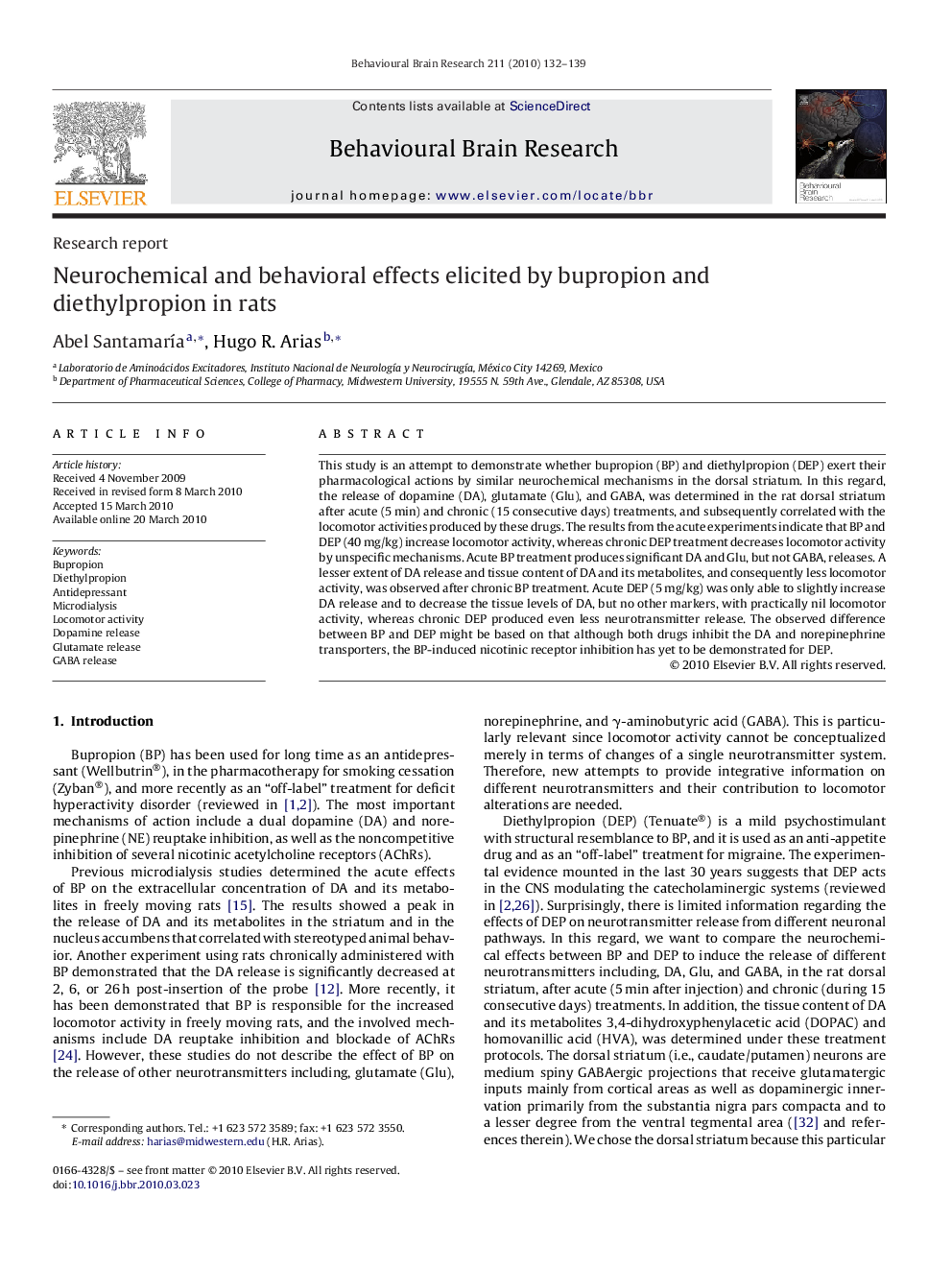| Article ID | Journal | Published Year | Pages | File Type |
|---|---|---|---|---|
| 4313852 | Behavioural Brain Research | 2010 | 8 Pages |
Abstract
This study is an attempt to demonstrate whether bupropion (BP) and diethylpropion (DEP) exert their pharmacological actions by similar neurochemical mechanisms in the dorsal striatum. In this regard, the release of dopamine (DA), glutamate (Glu), and GABA, was determined in the rat dorsal striatum after acute (5Â min) and chronic (15 consecutive days) treatments, and subsequently correlated with the locomotor activities produced by these drugs. The results from the acute experiments indicate that BP and DEP (40Â mg/kg) increase locomotor activity, whereas chronic DEP treatment decreases locomotor activity by unspecific mechanisms. Acute BP treatment produces significant DA and Glu, but not GABA, releases. A lesser extent of DA release and tissue content of DA and its metabolites, and consequently less locomotor activity, was observed after chronic BP treatment. Acute DEP (5Â mg/kg) was only able to slightly increase DA release and to decrease the tissue levels of DA, but no other markers, with practically nil locomotor activity, whereas chronic DEP produced even less neurotransmitter release. The observed difference between BP and DEP might be based on that although both drugs inhibit the DA and norepinephrine transporters, the BP-induced nicotinic receptor inhibition has yet to be demonstrated for DEP.
Keywords
Related Topics
Life Sciences
Neuroscience
Behavioral Neuroscience
Authors
Abel SantamarÃa, Hugo R. Arias,
